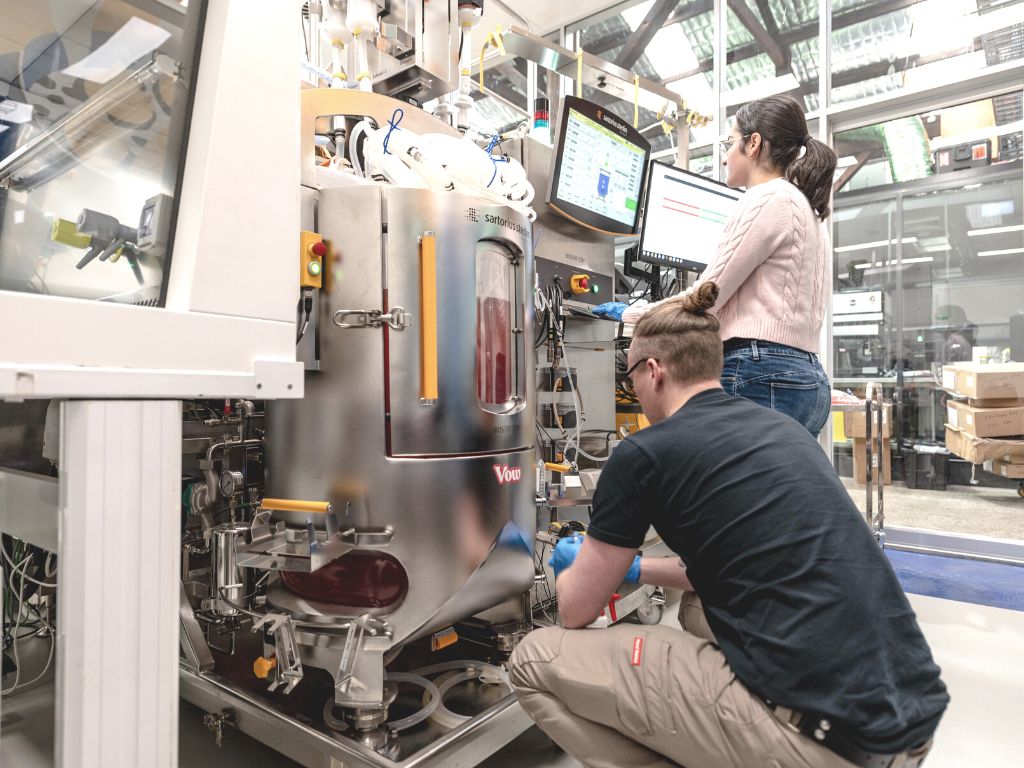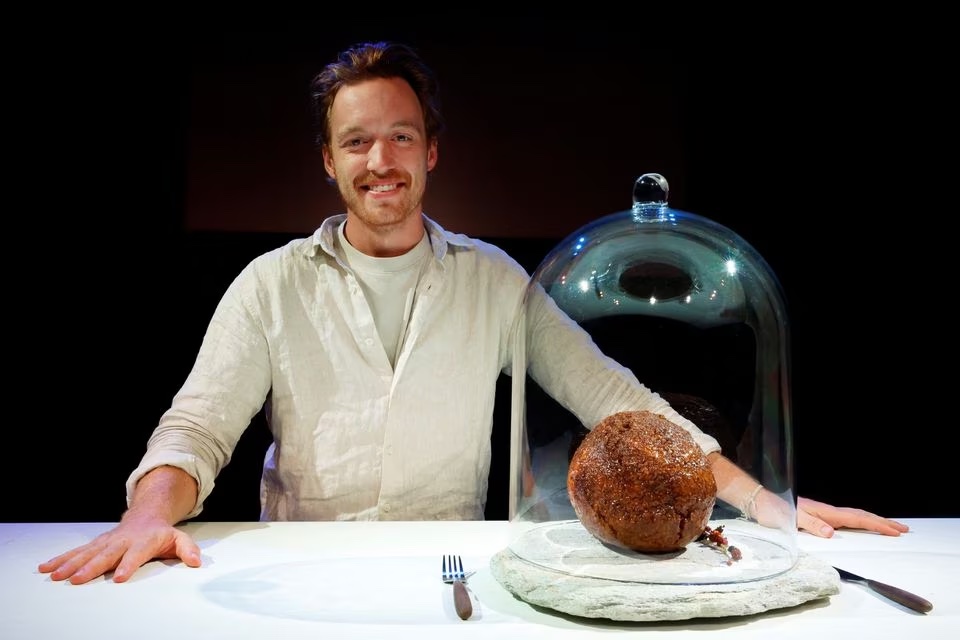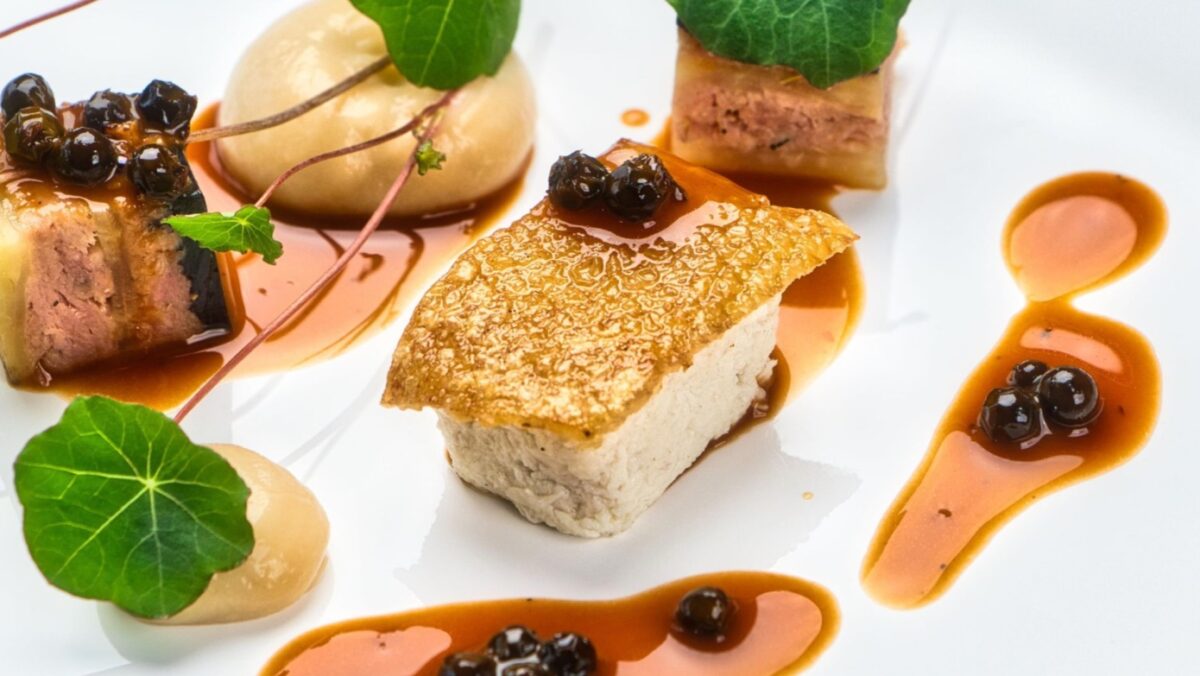Aussie Startup Unveils 4,000-Year-Old Mammoth Meatball That’s So Much More Than A New Sandwich Filling

A Sydney-based startup has flown its team and one very special piece of meat all the way to the Netherlands to unveil a scientific breakthrough that is equally game-changing and mind-bending. Though some have balked at the creation, we think this meatball shows just how exciting the future of food could be…
Cultivated meats have been in the pipeline for years, but the foods of the future are yet to actually land on consumer’s plates, with much of the activity around these newly-developed foodstuffs being strictly limited to carefully controlled laboratories with firmly closed doors.
Until today, that is. An Australian startup has unveiled a breakthrough development in the cultivated-meat game… but this isn’t your average test-tube beefburger. Drawing on prehistoric DNA, the newly revealed treat is actually inspired by the ancient past just as much as the distant future…
Australian startup Vow has created a woolly mammoth meatball using cells from the long-extinct animal, hoping the creation will function as a demonstration of the potential that lab-grown meat – which can be created without farming or slaughtering any living creatures – could have.
The meatball, created using mammoth muscle protein DNA mixed with elephant DNA and placed in sheep stem cells, has been unveiled at a science museum in the Netherlands. The project is designed to start conversations about meat consumption and its links to climate change, wildlife destruction, and human lifestyle.
According to Vow CEO George Peppou. The goal is to transition meat eaters away from conventional animal protein to “things that can be produced in electrified systems” and are “really really tasty” to boot.

Vow, which has raised $56m USD in investment to date, is using a different approach to other cultured meat companies by mixing and matching cells from unconventional species to create new and exciting kinds of meat. The company has already investigated the potential of over fifty species, including alpaca, buffalo, crocodile, kangaroo, peacocks and rare types of fish.
Its first cultivated meat for sale will be Japanese quail, expected to launch in Singapore this year. Plant-based alternatives to meat are now common, but cultivated meat replicates the taste of conventional meat down to the cellular level, making it altogether impossible to tell the difference. Two US companies have also passed an approval process to sell cultivated meat.
Cultivated meat has huge potential to reduce the environmental damage caused by large-scale meat production, particularly beef, which as well as requiring large amounts of land and water also produces a vast amount of methane emissions. Vow uses renewable energy to fuel its research and foetal bovine serum – a common growth medium produced from cattle foetuses – is not used in any of its commercial products.
However, Seren Kell at the Good Food Institute of Europe tempers excitement with caution: while the project has immense potential, “most of the sustainable protein sector is focused on realistically replicating meat from these species” such as cattle, pigs and poultry. She suggests that by cultivating beef, pork, chicken and seafood, “we can have the most impact in terms of reducing emissions from conventional animal agriculture”.

Tim Noakesmith, Vow co-founder, says the company chose the woolly mammoth “because it is a symbol of diversity loss and climate change”. The creature is believed to have become extinct due to hunting by humans and global warming following the last ice age.
Though the meatball is yet to be tasted, with the team at Vow citing concerns about the effects that a meat which hasn’t been consumed in over 4,000 years could have on the human immune system, we at DMARGE remain incredibly excited about the announcement.
Not only is it thrilling to see Aussie companies leading the charge in a sector which is nigh-on guaranteed to explode in the next decade or two, but Vow’s decision to create a historic meat – rather than focusing on the more prevalent but markedly less exciting poultry or beef that we’re used to – is a smart one.
By going with mammoth, Vow does more than highlight an apt symbol for climate change: this creation proves that futuristic foods have the potential to do so much more than just replicate the foods that we already know and love – a whole new world of flavours and textures lies just over the current scientific horizon.
That’s not to say that we should shamelessly plunder history for the flesh of animals that we’ve already killed off through human carelessness, but rather that a focus on creation rather than replication should be made a focal point of the future-foods industry.

As well as creating a lot of news-cycle hype and boosting Aussie industry, cultivated meat has the potential to utterly change the geopolitical landscape by providing good nutrition to billions and reclaiming vast areas of the planet – and vast amounts of human labour – that are currently given over to livestock farming.
This massive shake-up to the global status quo will create the opportunity for a huge democratisation of human socioeconomics but also create the potential for Big Farma to double down on their already existing monopolies and create strictly controlled markets around cultivated meat that could ultimately be just as damaging for the world and its populous as livestock farming already is.
A focus on creating new kinds of meat rather than replicating old ones mirrors the imperative to create new kinds of food, labour, and agricultural markets that use cultivated meat to make the world a better place, rather than just replicating the farming system as is.
You must have heard the timeless joke: when is a meatball not a meatball? When its a paradigm-shifting cipher for humanity’s past, present, and future, all at once.
The post Aussie Startup Unveils 4,000-Year-Old Mammoth Meatball That’s So Much More Than A New Sandwich Filling appeared first on DMARGE.








